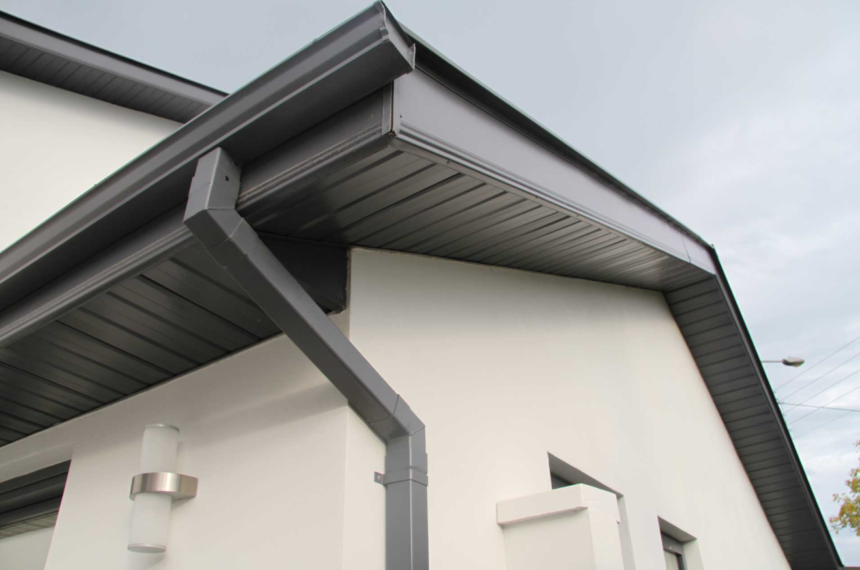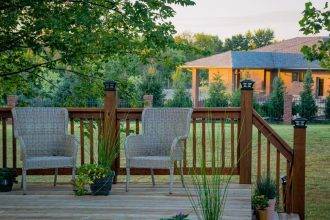Thinking about giving your home a facelift? It’s easy to get caught up in picking paint colors or landscaping ideas, but don’t overlook the importance of choosing the right materials for your fascia and soffit. These often-neglected parts of your home play a significant role in both aesthetics and functionality.
What Are Fascia and Soffit?
Fascia Explained
First things first, let’s get clear on what fascia is. The fascia is the board that runs along the edge of your roof, just under the shingles. It’s the last line of defense for keeping water from entering your home. Think of it as the border that frames your house, giving it a polished look. It also supports the lower edge of the bottom row of roof tiles and carries the gutters.
- Protection: Keeps water out.
- Support: Holds the gutters.
- Aesthetics: Frames the house beautifully.
Understanding Soffits
Now, the soffit is the material that connects the roof overhang to the side of your house. Picture it as the underbelly of your roof’s eaves. It’s typically ventilated to help keep a steady airflow between your roof and attic, preventing moisture buildup and promoting energy efficiency. In short, it helps your house ‘breathe’.
- Ventilation: Promotes air circulation.
- Moisture Control: Helps prevent mold.
- Aesthetics: Completes the roofline.
Why Choosing the Right Materials Matters
Long-term Durability
When it comes to durability, not all materials are created equal. The right choice will withstand weather conditions, resist pests, and last for many years. Using subpar materials can lead to frequent repairs and increased maintenance costs. Just like you wouldn’t want to buy a flimsy umbrella for a rainy season, you shouldn’t compromise on fascia and soffit materials.
Protecting Your Investment
Your home is likely your most significant investment. By choosing high-quality materials for your fascia and soffit, you’re protecting that investment. The right materials can help prevent water damage, pest infestations, and other issues that could compromise the integrity of your home.
Enhancing Curb Appeal
Finally, let’s talk about curb appeal. Your home’s exterior is the first thing people see, and high-quality fascia and soffit can make a world of difference. They add that finishing touch that makes your home look well-maintained and attractive.
Types of Fascia and Soffit Materials
Wood
Wood is a classic choice for fascia and soffit. It’s aesthetically pleasing and can be painted to match any home exterior. However, wood requires regular maintenance, including painting and sealing, to protect it from rot, pests, and weather damage.
- Pros:
- Aesthetic appeal
- Customizable with paint
- Cons:
- Requires regular maintenance
- Susceptible to rot and pests
Vinyl
Vinyl is a popular option because it’s low maintenance and durable. It won’t rot or need repainting. Plus, it’s available in various colors and styles to suit any home design. However, vinyl can become brittle in extreme cold and may warp in high heat.
- Pros:
- Low maintenance
- Durable
- Cons:
- Can become brittle in cold weather
- Warps in high heat
Aluminum
Aluminum is another durable option that’s resistant to rot and pests. It’s lightweight, easy to install, and can be painted. However, it can dent easily, and scratches may be visible on its surface.
- Pros:
- Rot and pest resistant
- Lightweight
- Cons:
- Prone to denting
- Visible scratches
Fiber Cement
Fiber cement is a durable and low-maintenance material made from a mixture of cement, sand, and cellulose fibers. It’s resistant to rot, pests, and fire, making it an excellent choice for fascia and soffit. However, it’s heavier than other materials and can be more challenging to install.
- Pros:
- Highly durable
- Resistant to rot, pests, and fire
- Cons:
- Heavy
- More challenging to install
UPVC
UPVC (unplasticized polyvinyl chloride) is a type of plastic that’s durable, low-maintenance, and resistant to rot and pests. It’s available in various colors and finishes, and it won’t warp or crack. However, UPVC can fade over time when exposed to UV light.
- Pros:
- Durable and low-maintenance
- Resistant to rot and pests
- Cons:
- Can fade over time
- Limited color options
Making the Right Choice
Consider Your Climate
When choosing materials, consider the climate where you live. If you experience extreme temperatures, you’ll want materials that can withstand those conditions without warping or cracking. For instance, vinyl might not be the best choice for areas with severe cold, while wood may not be ideal for humid climates.
Maintenance Level
Think about how much maintenance you’re willing to do. If you prefer a low-maintenance option, materials like vinyl, aluminum, or UPVC might be better suited for you. On the other hand, if you don’t mind the upkeep, wood offers a timeless look that can be customized to your preference.
Budget
Budget is always a factor when choosing materials. While wood might be less expensive upfront, the ongoing maintenance costs can add up. Conversely, materials like fiber cement or UPVC might have a higher initial cost but require less maintenance over time, offering savings in the long run.
Installation Tips
Hire a Professional
While DIY projects can be fun and rewarding, installing fascia and soffit is best left to professionals. Proper installation is crucial for functionality and longevity. A professional will ensure the materials are correctly installed and that ventilation is adequate to prevent future issues.
Regular Inspections
Even the best materials require regular inspections to ensure they’re in good condition. Check for signs of damage, such as cracks, rot, or pest infestations, and address any issues promptly to prevent them from worsening.
Keep Gutters Clean
Your fascia plays a vital role in supporting your gutters. Ensure your gutters are clean and free of debris to prevent water overflow, which can damage both your fascia and soffit. Regular gutter maintenance can help extend the life of your fascia and soffit.
Choosing the right materials for your fascia and soffit is essential for both the appearance and functionality of your home. By understanding the different materials available and considering factors like climate, maintenance level, and budget, you can make an informed decision that will protect and enhance your home for years to come.
Ready to give your home the care it deserves? Start by choosing the right materials for your fascia and soffit, and enjoy the peace of mind that comes with a well-protected and beautiful home.
For personalized advice and expert installation, reach out to our team today. We’re here to help you make the best choice for your home.














